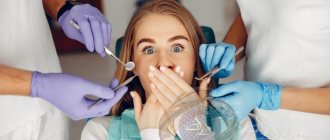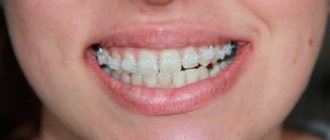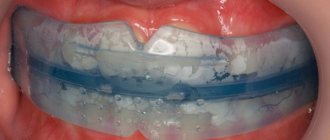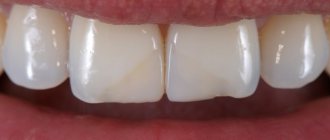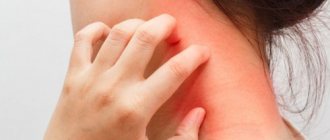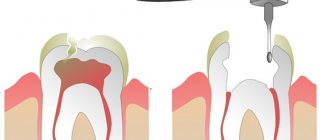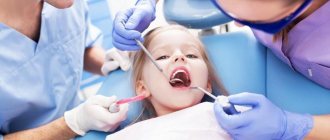Visiting a doctor during a cold – what you need to know
Professionals recommend rescheduling your appointment with the doctor to a later date. During a cold, the body experiences serious stress, and treatment can become additional stress. But if tooth pain prevents you from sleeping, then it is unreasonable to postpone the treatment procedure. What to do? Call the doctor, explain the situation and get detailed recommendations from a professional.
Why do dentists refuse treatment for colds?
- There is a high risk of contracting an infection through wounds in the oral cavity. A body weakened by a cold will not be able to resist viruses, which can lead to a worsening of the patient’s condition.
- The procedure under anesthesia reduces the protective functions of the immune system.
If ARVI is accompanied by constant nasal congestion, inflammation of the sinuses, and throat, there will be no dental treatment. The exception is the presence of acute pain, rapid development of the inflammatory process, and a high risk of flux formation.
Visiting the dentist at a high temperature - threats and risks
If you have a body temperature above 37.2 degrees due to ARVI, you cannot visit a doctor. The body is working to the limit, trying to overcome the infection; additional intervention will aggravate the risk of complications.
An exception is that an increase in temperature is caused by tooth disease, gum inflammation and other problems in the oral cavity. Here you need to contact the dentist as soon as possible. You cannot hesitate to prevent the growth of cysts and other formations.
Medicines
Ledocaine, Ketanov, Indomethacin - first aid against pain from an inflamed tooth nerve.
You can name several of the most popular medications that are used as an anesthetic for inflammation of the dental nerve:
- Ledocaine is a very well-known local anesthetic used in various fields of medicine. To anesthetize the inflamed nerve, apply the drug (gel) to a cotton swab and apply to the affected area for fifteen minutes. If you bought the drug in the form of a spray, then spray about 20 mg on the aching tooth, repeat the procedure every hour and a half, the maximum dose per day is 20 procedures. Before starting treatment with Ledocaine, read the instructions, especially the “Contraindications” section.
- Ketanov , usually widely used in tablet form. Do not exceed the daily dose of 5 pcs. and do not take the drug for more than one week. The greatest effect is when taken before meals. Much superior to the usual Analgin and Indomethacin. The action lasts up to eight hours. There are a number of contraindications.
- Indomethacin is a good pain reliever, taken three times a day; if the effect is not sufficiently pronounced, the dose can be increased to 50 mg. It is better to use after meals and wash down with milk. With prolonged use, exacerbations of chronic diseases are possible. It is advisable to read the instructions carefully before use.
All these drugs will help relieve attacks of severe pain, but do not forget that only a visit to the dental office can relieve you of the disease itself and help avoid possible complications.
Moscow metro station Zvezdnaya, Danube Avenue, 23
How to get rid of toothache during a cold
If your tooth hurts , take a painkiller. This is sound advice that is given 100% of the time. Here are some more options for managing pain symptoms:
- Rinse your mouth several times with a water solution of salt and baking soda. The mixture has antibacterial properties and will prevent the spread of infection.
- Place a menthol tablet under your tongue. As it dissolves, menthol will have an anesthetic effect.
- Apply a compress with ginger root and rinse with sage infusion.
- Focus your energy on treating your cold - the faster the virus is cured, the sooner you will be seen by a dentist.
If these methods do not work and your toothache gets worse, be sure to call your dentist. Perhaps the development of symptoms is a consequence of dental disease. And here you cannot do without the prompt assistance of a specialist.
Colds on the lips - can you go to the dentist?
Herpes is a viral disease in which any intervention is contraindicated. An experienced dentist will not undertake treatment if he discovers herpes on the patient’s lips. During the manipulation, the virus can enter the mouth and cause stomatitis - this disease will require more complex and expensive procedures.
Treatment of herpes on the lips will take a little time - special means cope with the virus in 2-4 days. If you discover a cold on your lips before going to the clinic, do not risk your own health, reschedule your visit.
Result:
- Dental treatment for acute respiratory viral infections is contraindicated; exceptions are permissible only if there is a high risk of developing oral infections.
- Herpes on the lips is the reason the dentist refuses to treat the patient.
Remember - if the pain intensifies, local or general anesthetics do not help, the temperature rises and severe discomfort is felt in the tooth area, it’s time to call the doctor. In all other cases, it is better to postpone treatment until the period of complete recovery.
How can discomfort manifest itself?
In the language of dentists, this phenomenon is called hypersensitivity or hyperesthesia. And the main causes of discomfort are abrasion and cracks of the enamel.
Pain from so-called aching teeth can manifest itself in different ways. Some patients have pain in all rows at the same time, and in some patients only 2-3 teeth hurt. The following manifestations are characteristic of hyperesthesia:
- Sharp aching pain of uncertain localization. A person complains that “the whole jaw begins to ache at once.”
- Severe pain when eating sweet/hot/cold foods and drinks.
- Pain localized to a specific part, such as the front teeth or back molars.
Dentists classify enamel hypersensitivity in different ways - according to the degree of prevalence, stage of occurrence and origin.
According to the degree of prevalence, hyperesthesia is divided into two types:
- Localized.
Occurs in the area of one or more teeth. This type of aches is caused by carious cavities and wedge-shaped defects in the necks of teeth. Sensitivity can also be caused by grinding down the enamel to install crowns. - Generalized.
This sensitivity spreads throughout the entire jaw. Hyperesthesia is provoked by periodontal tissue diseases, blooming caries and enamel erosion.
According to the causes of occurrence, hyperesthesia can be classified as follows:
- Hypersensitivity due to dental damage - caries, grinding and erosion of enamel.
- Hypersensitivity due to exposure of necks, tooth roots, as well as systemic pathologies in the body.
They are divided according to the stage of occurrence:
- 1st degree. Teeth ache due to temperature changes; the electrical excitability of dentin does not exceed 8 microamps.
- 2nd degree. Dentin begins to react not only to temperature, but also to chemical stimuli. Maximum electrical excitability is 5 microamps.
- 3rd degree. The teeth begin to cramp under any irritant, electrical excitability increases to 3 microamps.
Can a tooth cause a sore throat and why does this happen?
Yes, maybe it is explained by anatomical proximity. Therefore, it should be understood that we are talking about molars, and sometimes about “wisdom teeth” located close to the pharynx. If the front incisor and throat hurt at the same time, then they are unlikely to be somehow connected. And inflammation, especially purulent, of a molar can spread to the tonsils and submandibular lymph nodes, causing discomfort in the larynx and redness of the mucous membranes; Other symptoms include gingivitis and imaginary ear pain.
Accordingly, they first go to the dentist to solve the problem with a bad tooth. After treatment, doctors prescribe rinses with antiseptic solutions, which also cope with sore throats.
Diagnostic methods
Before starting treatment, the doctor will prescribe an examination that will determine the cause of pain and poor health. As a result of the examination, swelling, redness of the skin and mucous membranes of the nose, rash and other characteristic signs of a number of diseases can be detected. The patient needs to clarify when and under what conditions the first symptoms appeared. However, additional techniques will be required to make a final diagnosis.
- Rhinoscopy is one of the simplest procedures that allows the doctor to examine the internal structures of the nose using a mirror. To examine the anterior parts of the nose, it is enough to use a nasal speculum. It is wide and is used to assess the condition of the nasal turbinates and septum, as well as the mucous membrane. If necessary, the doctor uses a nasopharyngeal speculum. It is small, placed on a thin metal stick. Access to the tissues under study is carried out from the oropharynx.
- Endoscopy is a more invasive, but informative procedure. It is performed using an endoscope. It is a miniature camera on a thin, flexible tube that easily follows the movement of the nasal passages. Endoscopy allows you to examine the mucous membrane of the internal structures of the nose, identify injuries and neoplasms, and also take samples for biopsy.
- Diaphanoscopy is a method of examining the paranasal sinuses. It is performed in a dark room, with a special glowing lamp in the patient’s mouth. Normally, the sinuses are filled with air, so they are visible during diaphanoscopy. However, when they are filled with liquid or purulent contents, they become dark.
- Ultrasound diagnostics - prescribed for suspected sinusitis and frontal sinusitis. However, for most diseases of the inner nose, this technique is ineffective.
- CT, MRI - are used when injuries, neoplasms, or structural anomalies of the internal structures of the nose are suspected. The procedures are planned and prescribed when standard diagnostic methods are insufficiently effective.
The Clinical Institute of the Brain has all the capabilities for full diagnostics. The doctors have high-quality, modern equipment and many years of experience in treating diseases of the nose and head. They can ensure that the examination will involve a minimum number of tests to help determine the cause of the pain and the stage of the disease.
Treatment of pain in the head and nose
Treatment tactics are selected individually, depending on the exact diagnosis and the nature of the disease. Most diseases can be treated with medication, but in some cases surgery is necessary. The course may include the following stages:
- taking antibiotics is a mandatory measure for bacterial diseases, purulent inflammation, injuries, sinusitis;
- supportive treatment, which includes anti-inflammatory and vasoconstrictor drugs, antipyretics and analgesics;
- antiviral drugs;
- surgical treatment - consists of opening and washing abscesses, boils, as well as sanitizing the paranasal sinuses for sinusitis.
Doctors at the Clinical Institute of the Brain will select the most effective treatment regimen, which will include only the necessary steps. The drugs can be taken on schedule at home, only in some cases treatment in a hospital is indicated. The patient remains to follow all recommendations and regularly return for re-examination.
